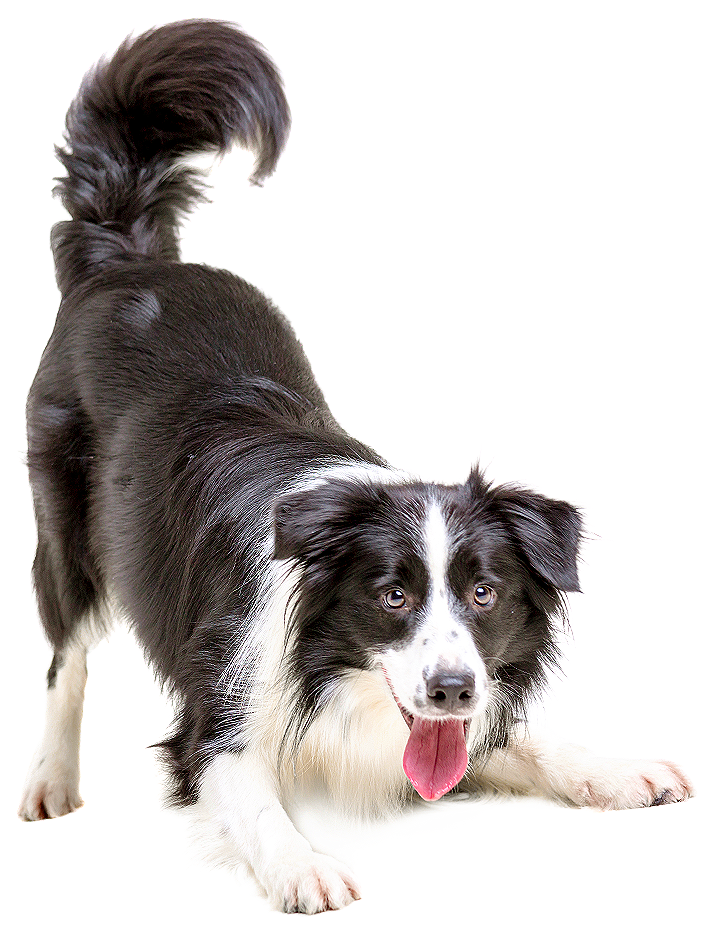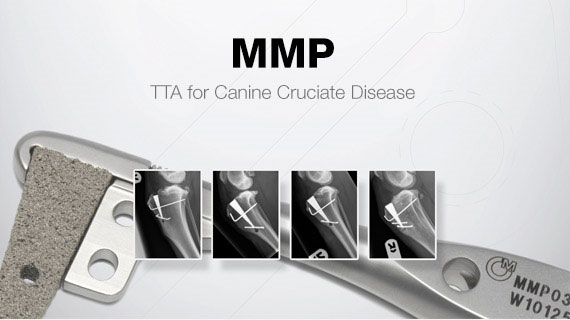Cranial Cruciate Ligament Surgery
Surgery to treat lameness caused by Cranial Cruciate Ligament [CCL] trauma or disease is one of the most common orthopedic operations in dogs.
What is the Cranial Cruciate Ligament?
There are two cruciate ligaments within the stifle [knee] joint which act in opposite directions to each other to counteract shearing forces between the Femur [thigh bone] and Tibia [shin bone]. When damage occurs to these ligaments, it is almost always the cranial ligament that is affected.
The ligament can be torn by straining/twisting of the ligament during exertional exercise, but more commonly in the bigger breeds, the ligament is gradually torn over a period of time – causing either continuous or intermittent lameness. It is now widely accepted that this is a ‘disease’ of the ligament rather than simple trauma.
Unfortunately, once the ligament is damaged the gradual process of osteoarthritis [degenerative joint disease] will commence. Surgical treatment is designed to remove as much pain and lameness as possible and reduce the onset and severity of arthritis.

The Different Surgery Options For Your Pet
Currently, there are a number of surgical techniques used to treat these cases.
They can be divided into techniques that Do or DON’T involve osteotomies [cutting into the bones].
What is the Modified Maquet Procedure?
The Modified Maquet Procedure (MMP) is merely a more robust and simplified version of TTA surgery, relying on a novel implant material, Orthofoam, supplied as a pre-formed wedge which is used to advance and fix the tibial tuberosity, thus replacing the cage, fork and plate in current usage. Without the necessity to apply a plate, fork, cage and graft to the bone, morbidity and surgical time is greatly reduced, aiding the speed of recovery, reducing the cost to the client, and lowering the risk of complications for the patient and speeding their recovery.
Orthofoam consists of sintered titanium beads formed into a rigid, porous structure through which new bone can grow (see photo). It can be pre-formed into any shape and provides a non-compressible scaffold to fill the bone void left by conventional TTA.
In addition, Orthofoam’s inherently high coefficient of friction helps lock the wedge into position immediately. The associated saw guide also helps achieve accurate, consistent and reliable results. Moreover, rapid bone in-growth results in a robust construct within a few weeks of surgery. This in turn allows for an early return to full weight-bearing and facilitates intensive physiotherapy much earlier than with other techniques.
A further refinement of the MMP is the method of tibial advancement estimation. This relies on datum points located exclusively on the tibia, thus avoiding the necessity to radiograph the limb in 135˚ of flexion as directed previously; a difficult task to reproduce consistently.

Don’t hesitate to contact us if you would like any further information on this technique or think you may have a suitable case.
References
1. Kim SE, Pozzi A et al. Effect of tibial tuberosity advancement on femoro-tibial contact mechanics and stifle kinematics. Vet Surg. 2009; 38 (1)33:39.
2. Hoffmann DE, Miller JM et al. Tibial tuberosity advancement in 65 canine stifles. Vet Comp Orthop Traumatol. 2006;19(4):219-27.
3. Lafaver S, Miller NA et al. Tibial tuberosity advancement for stabilisation of the canine cranial cruciate ligament-deficient stifle joint: surgical technique, early results, and complications in 101 dogs. Vet Surg. 2007;36(6):573-86.
4. Kim SE, Pozzi A et al. Tibial osteotomies for cranial cruciate ligament insufficiency in dogs. Vet Surg. 2008;37(2):111-25.
5. Voss K, Damur DM et al. Force plate gait analysis to assess lib function after tibial tuberosity advancement in dogs with cranial cruciate ligament disease. Vet Comp Orthop Traumatol. 2008;21(3):243-9.
6. Stein S, Schmoekel H. Short-term and eight to 12 months results of a tibial tuberosity advancement as treatment of canine cranial cruciate ligament damage. J Small Anim Pract. 2008;49(8):398-404.
7. Boudrieau RJ. Tibial plateau levelling osteotomy or tibial tuberosity advancement? Vet Surg. 2009;38(1):1-22.
8. Kim SE, Pozzi A et al. Effect of cranial cruciate ligament deficiency, tibial plateau levelling osteotomy, and tibial tuberosity advancement on contact mechanics and alignment of the stifle in flexion. Vet Surg. 2010;39(3):363-70.
9. Dymond NL, Goldsmid SE, Simpson DJ. Tibial tuberosity advancement in 92 canine stifles: initial results, clinical outcome and owner evaluation. Aust Vet J. 2010:88(10):381-5.
10. Etchepareborde S, Brunel L et al. Preliminary experience of a modified Maquet technique for repair of cranial cruciate ligament rupture in dogs. Vet Comp Orthop Traumatol. 2011:24(3):223-7.
